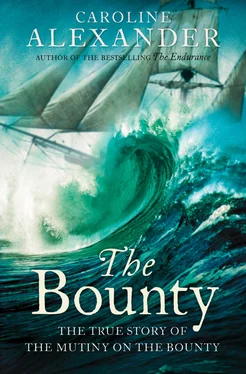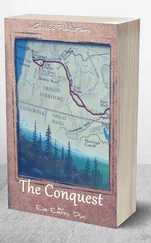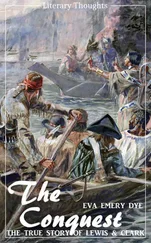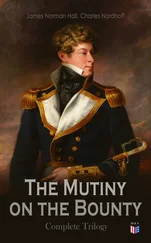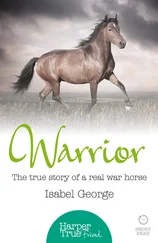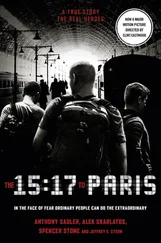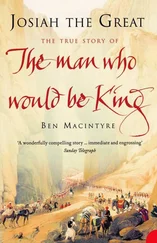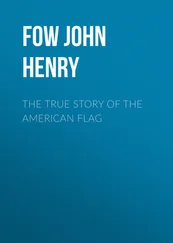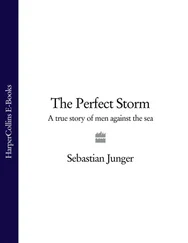‘Providentially a small barrel of water, a cag [keg] of wine, some biscuit, and a few muskets and cartouch boxes, had been thrown into the boat,’ Hamilton wrote, suggesting that what little supplies there were had been saved by chance. A daily ration was determined of three ounces of bread, two small glasses of water and one of wine, with the occasional addition of an ounce of portable soup, or cakes of dried soup, and half an ounce of essence of malt. Edwards’s plan was to sail for the Dutch East Indies settlement of Coupang, in Timor, the same port that had received Bligh and his company at the end of their ordeal in the Bounty’s launch. The irony that the Pandora’s boats were to replicate part of Bligh’s famous voyage is unlikely to have escaped anyone – least of all poor Thomas Hayward, who had been with Bligh and was thus about to embark on his second Pacific open-boat journey in a little more than two years. A voyage of some eleven hundred miles lay ahead.
On 31 August the third day after the Pandora had struck the reef, the little squadron set sail, with Captain Edwards leading the way in his pinnace, followed by the red and blue yawls and the launch. The prisoners had been carefully apportioned among the vessels. Peter Heywood, in the launch under the sympathetic Lieutenant Corner, had drawn what was probably the happiest boat, while James Morrison, as he reported, ‘had the good or evil fortune, call it which you please to go in the Pinnace with Capt. Edwards.’
Proceeding northwest, the little squadron now at last passed through the reef by way of a channel that, as Edwards reported to the Admiralty, was ‘better than any hitherto known’ – a discovery that had come rather late in the day. In the morning of the following day, they came to the desolate, treeless coast of New Holland. Here, the parched men had the rare good fortune to find a spring rushing onto the beach. The prisoners in particular were tortured by the sun; their skin, pale and tender after five months of confinement, had quickly burned and blistered. Peter wrote, ‘We appeared as if dipped in large tubs of boiling water.’
The company passed the night off a small island, where they were awakened by the howling of dingoes, which they mistook for wolves. On the afternoon of 2 September, they passed a series of distinctive islands that were recognized from Bligh’s account and a chart made during his boat voyage. By the evening, the boats were in sight of Cape York, the northernmost tip of New Holland, and the end of the strait. Ahead was the Indian Ocean and a one-thousand-mile run to Timor.
‘It is unnecessary to relate our particular sufferings in the Boats during our run to Timor,’ wrote Edwards, with his usual literary sangfroid, ‘and is sufficient to observe that we suffered more from heat & thirst than from hunger.’ The weather, at least, was good and the overloaded boats made satisfying progress. At dawn on the sixteenth the Dutch fort at Coupang, Timor, was at last hailed. Edwards had lost no men on this leg of the journey, although they had been reduced to drinking the blood of captured birds and their own urine.
Backed by gentle, verdant, wooded hills, the small settlement of Coupang was built at the head of a deep natural harbour. It consisted of little more than a fort and a handful of houses, a church, a hospital and company stores serving a population of Dutch officials, Chinese merchants and Malay slaves. A European ship at anchor amid other small craft offered a comfortingly familiar sight. The Pandora’s four boats hailed the fort, and the men were welcomed ashore.
While the Pandora’s officers and men were dispersed in different houses around the settlement, the prisoners were taken to the fort itself and put in the stocks. Again, Edwards’s report makes no mention of the prisoners at all during this sojourn, but Morrison’s account is graphic: ‘Immediately on our landing Provisions were procured which now began to move our bodys and we were forced to ease Nature where we lay.’ Most of the men had not moved their bowels for the duration of the journey, and some were now administered enemas through a syringe.
‘The Surgeon of the Place who visited us could not enter the place till it had been washed by Slaves,’ Morrison continued. ‘We had laid 6 Days in this situation…’ A compassionate Dutch officer of the fort, clearly appalled at the prisoners’ treatment, arranged to have the men released from the stocks and placed in leg irons, manacled two by two, but otherwise at liberty to walk about. The prisoners were still almost naked, but with ‘some of the leaves of the Brab Tree…set to work to make hats’, a skill undoubtedly learned in those faraway days in Tahiti. These hats the enterprising prisoners then sold and with the little money earned bought tobacco.
As it turned out, the Pandora ’s company were not the only distressed British sailors at Coupang. Some months earlier, seven men, a woman and two children had arrived at the fort in a small six-oared cutter with the story that they were part of the crew and passengers of a wrecked brig called Neptune. They too had been treated with great compassion by the Dutch authorities. And when Edwards and his men came ashore, the kind Dutchmen had hastened to their guests to bring them the good news that their captain had arrived.
‘What Captain! dam’me, we have no Captain,’ Hamilton reports one of them had unwisely exclaimed. The small party, it turned out, had not been shipwrecked, but were convicts who had made a daring escape from Botany Bay (‘they were discovered to be Cheats,’ as Morrison noted self-righteously).
On 6 October having recovered strength, Edwards led his entire company to sea again, this time as passengers on a Dutch East Indiaman, the Rembang. Their destination was the Dutch settlement of Batavia, on Java, from where Edwards expected to get passages to Cape Town. Here, there would be other company ships bound for Europe.
This short passage from Timor to Batavia proved to be as eventful as any in the men’s now protracted travels. On the sixth day out, while they were off the coast of Flores, a tremendous storm erupted. According to Dr Hamilton, within a few minutes ‘every sail of the ship was shivered to pieces…This storm was attended with the most dreadful thunder and lightning we had ever experienced.’
At the height of this crisis, when the ship was in imminent danger of being driven onto the lee shore, the Dutch seamen, Hamilton reported, ‘went below; and the ship was preserved from destruction by the manly exertion of our English tars, whose souls seemed to catch redoubled ardour from the tempest’s rage.’ This appears to have been no exaggeration. Morrison himself, hardly one to volunteer praise for his captors, stated matter-of-factly that the ship was ‘badly found and Worse Managed and if Captain Edwards had not taken the Command and set his Men to work she would never have reached Batavia.’
On 30 October, the Rembang limped into Semarang, on the north coast of Java. The prisoners had been let out of irons during the battle with the storm to take turns at the pumps but had discovered they no longer had strength for this routine duty. But the spirits of the whole company were raised by an entirely unexpected and welcome surprise: the Pandora ’s little schooner, Resolution , awaited them, safely anchored in the harbour. After having lost sight of Pandora in the gale four months earlier, the Resolution’s men set out from the Samoas to the Friendly Islands, skirted the southernmost of the Fiji group, made northwest for the Endeavour Strait, struck out for the Indonesian islands and came, through the Strait of Bali to Surabaya, on the north coast of Java. Their navigational equipment had consisted of two quadrants, a volume of Robertson’s Elements of Navigation and an edition of Guthrie’s Geographical Grammar , but no charts.
Читать дальше
